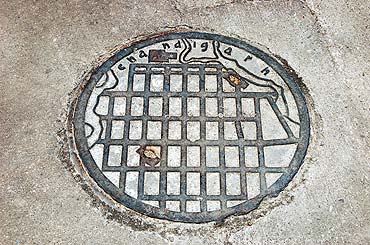In a hard hitting and valid arguement Daniel Brook talks about Mukesh Ambani’s Antilla being billed as a Green Building by its American architects Perkins+Will.
The LEED rating system at best is a guideline and at worst is riddled with loopholes. This allows for architects like Perkins+Will to claim to design green buildings while in reality it is all a hogwash.
green buildings while in reality it is all a hogwash.
The rating system is designed for US standards and when implemented on Indian conditions and buildings, every project could bag the “green” tag.
conditions and buildings, every project could bag the “green” tag.
Perkins+Will is not the only ones who ride the hype-mobile. Even reputed Indian architects like Karan Grover do the same. By understanding the system and finding the loopholes; Grover has the “distinction” of being the first architect with both a LEED Platinum Building and a LEED Platinum Commercial Interior project.
Even FXFowle who is designing the India towers at Charni Road in Mumbai
towers at Charni Road in Mumbai are billing their project to be
are billing their project to be
within a sustainable network of green roofs and hanging gardens; creating a singular, extraordinary building that, when completed, will be the tallest and greenest – building in India. [link]
Green has become the buzzword of the latter half of this decade. And it helps to sell everything from food to apartments costing millions (in whatever currency).
to apartments costing millions (in whatever currency).
And from what I read and see, India seems to be picking up the hype which has somehow started clearing out in the US, as the article below points out .
In a high-end Mumbai neighborhood, Indian billionaire Mukesh Ambani’s personal high-rise, named Antilia, is under construction. When completed, the 24-story Ambani family home will include its own health club, terraced sky-gardens, and 50-seat screening room (the reclusive Ambani is reputed to be a huge Bollywood fan). Antilia also boasts three helipads and a 168-car garage. This may sound like transportation overkill, if not outright eco-terrorism, for a family of six. But despite its 38-to-1 car-to-person ratio, Antilia has been billed by its American architects as a “green building.” And under the leading standards for green architecture , the building will likely qualify.
, the building will likely qualify.
 From the massive Secretariat to the Law Buildings and Courthouses, Le Corbusier’s vision for India took a long time to build, but today is a thriving metropolis. In many ways, Corbusier’s principles did not work, but for the most part the synergy they created has been sustained today. It is now also a mini architectural mecca for students and architects alike.
From the massive Secretariat to the Law Buildings and Courthouses, Le Corbusier’s vision for India took a long time to build, but today is a thriving metropolis. In many ways, Corbusier’s principles did not work, but for the most part the synergy they created has been sustained today. It is now also a mini architectural mecca for students and architects alike.